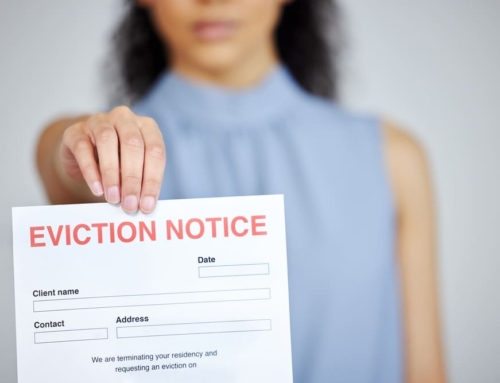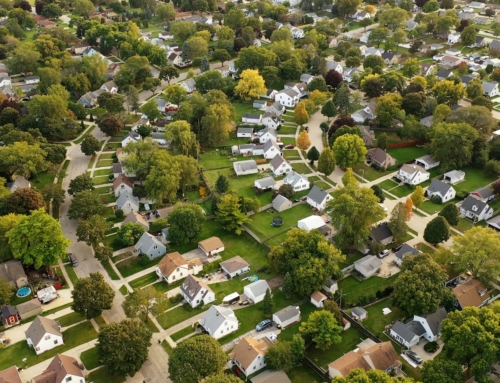The first thing I wanted to do when I finished reading Robert G. Allen’s book, Nothing Down for the 2000s, was run out of the house and buy real estate – an apartment building, vacant land, fixer-upper house for rent. Anything would do.
After all, how hard could it be?
The book which is a completely revised and updated version of Allen’s original classic bestselling book, Nothing Down, is peppered with anecdotes about real people who with no money or credit who managed to buy property worth thousands or even millions of dollars.
“In my first-ever deal I’m acquiring a $5.7 million, 91-unit apartment building for $4.25 million using none of my own money,” crows Gregg Warr, a New York City-based Allen disciple, on the back cover of the book.
Surely, if Warr can be the happy-go-lucky, successful-like-Trump real estate investor, why not me? Or, more to the point, you?
Which is the entire premise of Allen’s book. He believes that anyone is capable of uncovering great real estate deals in every corner of the corner, and use his nothing down techniques to generate tremendous real estate wealth.
Allen, who has made a whole lot of money in businesses outside of real estate, still believes fortunes can be made by being smart about what you buy and sell. Far more than most of the get-rich-quick books in this category, Allen lays out realistic scenarios and thoroughly explains how it’s all going to work.
But first, you have to be emotionally and mentally committed to the task. After laying out why he thinks real estate will continue to appreciate in value for the foreseeable future, he spends a few chapters asking you to look deep inside yourself to make sure you’re really right for the task of buying and selling real estate. Do you have the traits necessary to make it big? Allen wants to know if readers think they are courageous, have imagination, critical thinking skills, people skills (he often says in the book that real estate is a people business), communication skills, the ability to negotiate a tough deal, are generous and if they have a sense of humor. If you can’t give yourself a 5 on a scale of 1 to 10, you might have trouble making it as a real estate investor.
And while you don’t have to have any cash for a down payment, Allen thinks it’s a good idea to figure out your net worth.
The next big idea in the book is the “don’t-wanter.” This, according to Allen, is a property owner who no longer wishes to own his property. Ideally, the don’t-wanter is so desperate to unload the real estate that he or she will agree to sell at a below-market price, and take nothing down. In the book, Allen says that perhaps 5 percent of all property owners fall into this category – which translates into millions of deals ripe for the picking.
Although the book does a good job of supporting the reader to reach just one conclusion – you will get rich buying and selling property if you do it right – it also does a good job of explaining the details.
In the chapter on financials, Allen offers an “annual Property Operating Data” form that looks at all the income and costs involved with owning and managing rental property, including a category for accounting and legal costs, and another for advertising, licenses and permits.
Most novice property owners don’t know what to expect when it comes to costs of purchase, ownership and maintenance, and will find this worksheet extremely helpful.
Allen explains that property owners should expect to spend between 5 and 10 percent of the gross operating income on repairs and maintenance. He wisely suggests asking the seller for copies of the receipts for major repairs during the past several years. And he warns buyers to budget about 1 percent of the gross operating income for supplies.
While Allen firmly believes in positive cash flow (that is, having cash at the end of the month after paying for all the property expenses), he also says you can make a fine investment on a property that has negative cash flow.
How? There are four ways to make money on your investment, including a positive cash flow, building up equity by paying down the mortgage, savings on taxes, and price appreciation. In one example in the book, Allen describes a 274 percent return on his investment in a commercial property that he achieved through decent-size returns in each of these four categories.
Finally, once the reader is fully prepared, there is an interesting discussion of how to negotiate to buy a property with nothing down.
For buyers who are purchasing a primary residence (or something that will start out as a primary residence and may turn into a rental property down the line), getting a zero down mortgage is pretty easy – and about to get even easier.
Many lenders now offer true zero-down loans and for home buyers with good credit, you can even get a 103 percent loan that wraps your closing costs into the mortgage itself. Yes, you’re financing that, and paying interest on the cash you’ve borrowed for closing costs, but it’s better than not buying because you don’t have enough cash on hand. FHA is ready to start its own zero-down payment loan program as well, which means these loans will be even more widely available.
When buying commercial property, Allen makes it sound so easy. Simply schedule the closing around the time when the rent is due. The rent plus the deposits become the property of the owner, so that cash will be available once you close. Next, you can try bringing in a partner with good credit to help provide an additional loan. Ask the seller to take back a second or even third loan on the property.
The best idea in the book (if you can get anyone to agree to it) is to ask the seller to suspend repayment on the second or third loan for six months while you let cash build up.
If you’re thinking that sounds a bit tricky, it won’t after you read the rest of the book. And then you’ll be like me: Up late at night scouring sites like Realtor.com looking for my next deal-of-a-lifetime.
Nothing Down for the 2000s (Free Press, $25) is available at local bookstores or at amazon.com.
Published: Nov 19, 2004






Leave A Comment